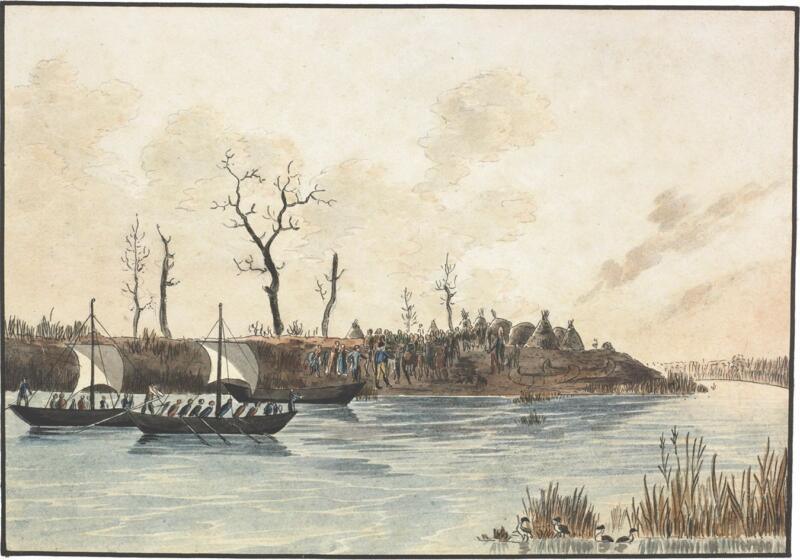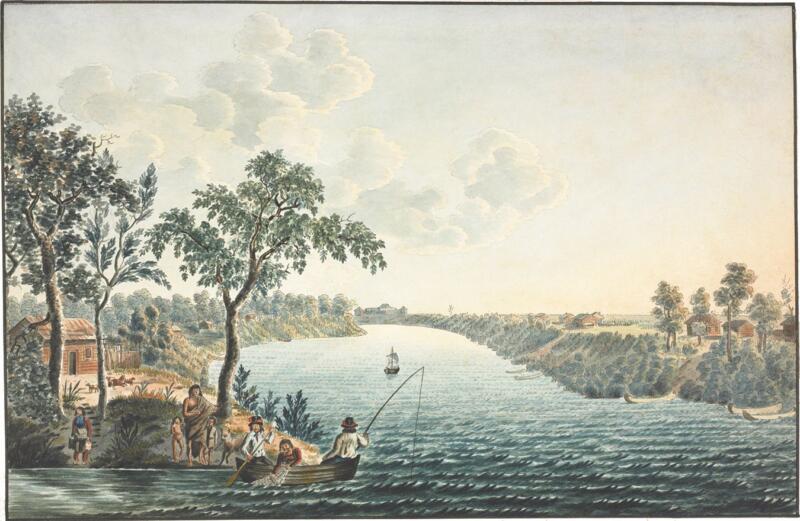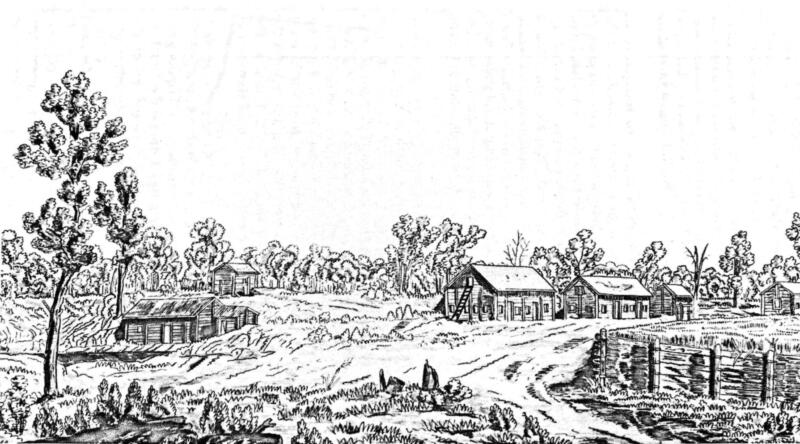1954 Survival of the fittest Scots
Unsettled: Lord Selkirk’s Scottish Colonists and the Battle for Canada’s West, 1813-1816
by Robert Lower
Toronto: ECW Press, 2023
$29.95 / 9781770417182
Reviewed by Ron Verzuh
*
 Many of us learned about Lord Selkirk’s Red River Settlement in high school or college, but we’ve never read it so up close and personal as Robert Lower allows us to do. One of his ancestors was at the settlement (now southern Manitoba) so he writes this history with a family member’s passion as well as an historian’s skills and a filmmaker’s eye.
Many of us learned about Lord Selkirk’s Red River Settlement in high school or college, but we’ve never read it so up close and personal as Robert Lower allows us to do. One of his ancestors was at the settlement (now southern Manitoba) so he writes this history with a family member’s passion as well as an historian’s skills and a filmmaker’s eye.
To refresh your memories, Lord Selkirk bankrolled the resettlement of several hundred Scottish farmers when they were kicked off their land back in the early 1800s. The local land-owning class figured they could make a good buck (or shilling) by using a method of land theft called the Clearances. Calling themselves “Improvers,” they used their stolen property to raise sheep.

By 1813, the former land occupants were impoverished and looking for an escape from rapacious Scottish lords. Enter Selkirk, who is keen to add to his earlier colonization successes at Prince Edward Island and Upper Canada (Ontario). He sends Captain Miles McDonell to scout out the territory, which he has bought from the Hudson’s Bay Company.
You may recall that the HBC was granted a monopoly in 1670 and is able to act as it sees fit over the vast territory called Rupertsland. The HBC’s mortal enemy in the highly competitive fur trade business is the Northwest Company, the Nor’westers, and Lower builds some of his story around the bitter rivalry.
The whole mess began when McDonell issued an edict disallowing the removal of pemmican from the settlement. The bois-brulés (Métis) and other fur traders need the pemmican to survive as they gather their furs. The Pemmican War begins and ultimately ends with the Battle of Seven Oaks wherein several colonists and military men die at the hands of an armed force of bois-brulés, Indigenous warriors, and Nor’westers. Their leader, Cuthbert Grant, does not agree with the slaughter and works to save lives, eventually earning him the title Warden of the Plains.

Earlier McDonnell is sent packing by the settlement leaders and their allies. Along comes Colin Robertson to save the colony from “this morass of incompetence, colony collapse and self-serving venality.” In his colourful style, Lower describes Robertson’s entry on the scene: “Then in marches Beowulf, this Ivanhoe, the latter-day Radisson, a dreamer and a romantic but also a man of action, a schemer and a manipulator.”
Robertson encounters much resistance especially from the likes of Duncan Cameron, a leader of the Nor’Westers at nearby Fort Douglas. A standoff results in Robertson’s victory only to have it snatched from him by the arrival of Governor Robert Semple. The scene is set for what inevitably leads to bloodshed and a major setback for Lord Selkirk’s band of Scotsmen and women.

Along the way, Lower shares many stories of hardship, courage, and betrayal. The array of similar Scottish surnames can be baffling, but most of it gets sorted. The colonists who set about sowing crops and building homesteads in a beautiful but wild territory are depicted as hard-working and willing to take orders. Anything is better that returning to Scotland where the Clearances have made them persona non grata in their homeland.
One omission in this well-told story of intrigue on the high plains is the absence of a full chapter on Christina McLean, one of the settlers. Lower mentions her many times, revealing her huge influence on the movers and shakers in the new colony. However, she and her spouse Alex, who is killed at Seven Oaks, clearly played an outsized role that begged for more information. As it is, she is credited as “a remarkable woman.”

To be fair, Lower may have searched for more about her. For other historic figures, he cites ample sources, including the Dictionary of Canadian Biography and the Selkirk archives. It may be, however, that Christina has been overlooked amidst the alpha male crowd that is at the centre of the action. Lower does describe the women and children that endured the three years covered by his story. Brave souls all, though Lower notes that they were “led to make history in the worst possible way.”
Lower includes the Indigenous plains people and makes no secret of his sympathy for their situation, caught in a trading relationship that transformed into “an imperial acquisition, an extension of Britain, pushing aside and dispossessing the original peoples.” He adds that “in this story are the seeds of that one-sided catastrophe [which] hints at how it might all have been done differently.”
History is no longer offered at some schools and colleges. Short-sighted as that is – education without history does not help shape a nation – school authorities are also depriving young people of a chance to enjoy the excitement of studying Unsettled in the classroom.
This kind of present-tense writing forces you to turn every page, makes you want to know what happened and engages readers in a significant part of Canada’s pioneer past. It is history as it should be written, with minimal footnoting, clear language, impeccable research, and an uncanny talent for putting readers at the scene.
The book, published in Toronto and about Manitoba, is not strictly speaking a BC story. However, its author lives in BC part of the year and the story of the settlement had an impact on all westerners. Eventually, we were residents of the HBC empire of Rupertsland and Red River was just an early clash in the quest to exploit what lay ahead.

*

Ron Verzuh is a writer, historian and documentary filmmaker. His latest book is Printer’s Devils (Caitlin Press, 2023). [Editor’s note: Ron Verzuh has recently reviewed books by Benjamin Isitt & Ravi Malhotra, Marc Edge, Bobbi Hunter (editor), BC Hydro Power Pioneers with Kerry Gold, J. Edward Chamberlin, Glen A. Mofford for The British Columbia Review, and he has contributed an essay on trade unionist Harvey Murphy. Ron lives in Victoria.
*
The British Columbia Review
Interim Editors, 2023-24: Trevor Marc Hughes (non-fiction), Brett Josef Grubisic (fiction)
Publisher: Richard Mackie
Formerly The Ormsby Review, The British Columbia Review is an on-line book review and journal service for BC writers and readers. The Advisory Board now consists of Jean Barman, Wade Davis, Robin Fisher, Barry Gough, Hugh Johnston, Kathy Mezei, Patricia Roy, Maria Tippett, and Graeme Wynn. Provincial Government Patron (since September 2018): Creative BC. Honorary Patron: Yosef Wosk. Scholarly Patron: SFU Graduate Liberal Studies. The British Columbia Review was founded in 2016 by Richard Mackie and Alan Twigg.
“Only connect.” – E.M. Forster
8 comments on “1954 Survival of the fittest Scots”